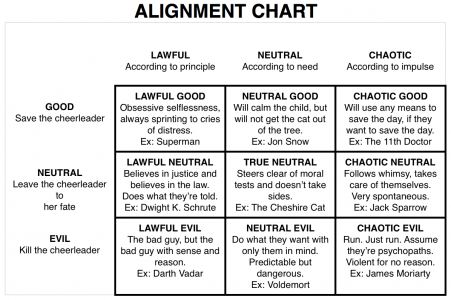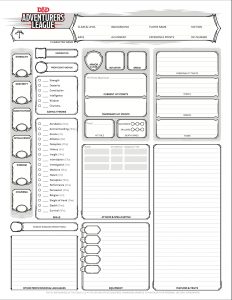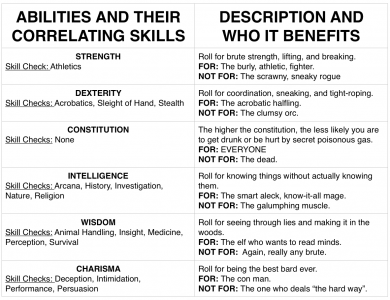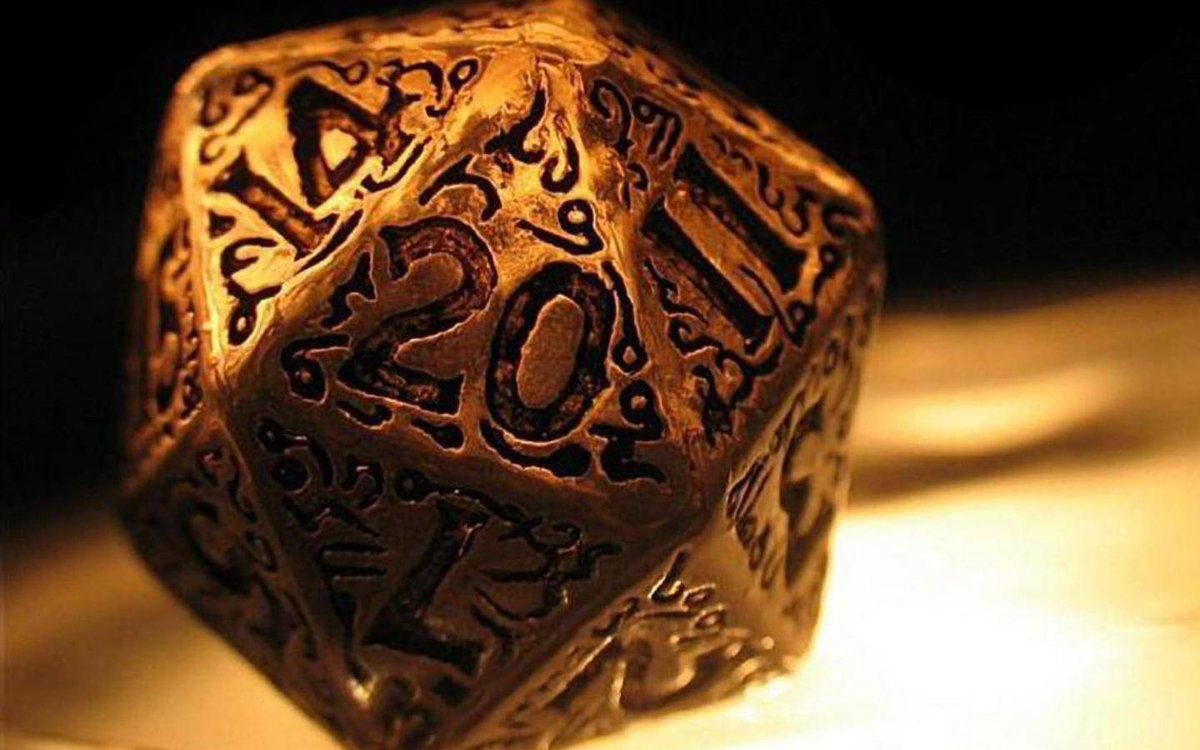Ah yes, you look well, young Nerdling, and eager for more tips on the basics of Dungeons & Dragons. In today’s lesson, we will discuss the task of choosing your character’s Alignment as well as the art of the Character Sheet. Start by downloading this bad boy and keep it at the ready, but first open your Player’s Handbook to Pg. 115. (Tip: if you haven’t downloaded the book to your desktop or printed it out yet, you’re off to a rocky start.) Let’s begin with the basics of Alignment.
Character Alignment
Alignment is a fancy word for two mortal-world factors all human’s face: Morality (good, neutral, evil) and Attitude (lawful, neutral, chaotic). Everyone has a basis of morality and general attitude towards society and others. The Pope, for example, appears to not only have intensely high morals, but also a very good attitude (he’s a total Cleric). While someone like The Joker not only has a very sketchy basis of morality, his attitude is generally, well, nuts. The Pope would be said to have a Lawful Good alignment; His morals are law to him (unwavering) and his attitude towards society and others is loving and good. The Joker would have a Chaotic Evil alignment, for his attitude towards the world is obviously chaotic, and his morality is a tinge evil.
All together there are nine types of Alignment to choose from, and on Pg. 115 in the Handbook you can see each of them as well as their description. For your enjoyment, I’ve added a table below:

Though this decision seems simple, what you choose for your character will truly determine how they react in every situation your DM throws at them. It is generally difficult for a good-natured person to play a psychopath due to the impulse to do the right thing. Each race and class has a cultural alignment they typically fall under, but that doesn’t mean all dwarves are lawful good or all rogues are chaotic neutral. Your character is who you say they are!
Character Sheet
If you’ve read the first two installments of this Dungeons & Dragons series, then you’re probably ready to fill out the Character Sheet. Refer to the link earlier to have your own character sheet on hand and get your typing fingers or your pencil ready!
We’re going to focus on the basics on Pg. 1 of the character sheet you’ve found, because word limits are law here at The Noobist. The remainder of Pg 1 and all of Pg 2 will be covered in the upcoming adventures. This is what you should be looking at:

Let’s break this sheet down into pieces and tackle it bit by bit. Roll initiative! I mean…let’s get to it.
Fundamentals
At the top of the page you will answer the fundamental questions about your character: Name, Race, Class, and Alignment. Ignore the blanks for Experience Points, Faction, and DCI Number and don’t ask questions. Fill in your character’s name, their race, class, and the spiffy new alignment you’ve chosen. Next to Class, you will put a “1” because you’re level 1! If I was playing a chaotic good, half-elf bard named Willivee whose background was an urchin, the character sheet would look like this:

Abilities
Next, look to the left column that lists your abilities: Strength, Dexterity, Constitution, Intelligence, Wisdom, and Charisma. Here is a quick description of what each of the abilities means and the rolls they can help or hurt:

You can choose to roll four 6-sided dice and taking the highest three numbers and adding them together, then repeat five more times to get your base numbers, or you can use the numbers the handbook gives you, which are 15, 14, 13, 12, 10, and 8. Each of the six numbers will get plugged into an ability box where you see fit. If you were playing a really strong half-orc, you’d probably want to put the highest number into the Strength box. If you were playing a fantastic liar, your highest should go in Charisma. These abilities will help you succeed on rolls (“checks”), like a Deception check to convince a guard you are late for a party in the castle, or an Athletics check to climb over a wall. So plug your numbers in based on the skill checks you prioritize. A bard would prioritize Performance over Athletics, for example.
Modifiers
You will notice the ornate oval at the bottom of each ability block. That is where you put your modifier for your skills. Refer to this chart:

So if you have a 15 in your Strength box, you will put a +2 modifier in your oval. This means when your DM says, “Roll an athletics check,” you will take your d20, roll it, then add 2 to whatever number you get. Do you see why it is important to prioritize your skills? Complete the rest of your ovals by referring to the chart.
Progress!
Yes, your character sheet still has a long way to go, but when your character sheet is finally complete, your little creation will be like a minion to you. As I said before, next time we will complete the first page of the character sheet and later tackle your backstory with Page 2. Until then, check out all of these neat D&D dice sets you could have! Adventure on, nerds!

